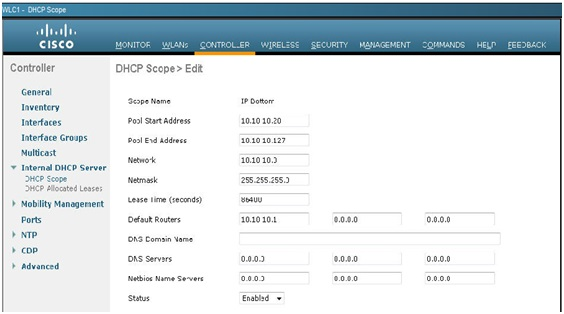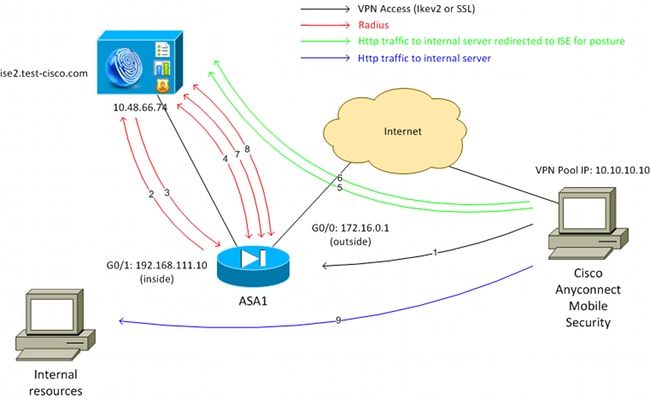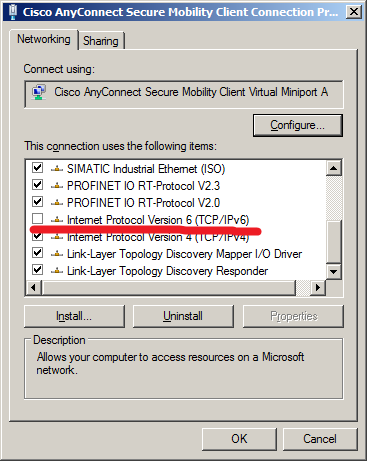I enjoy the new VPN client, it’s small and fast, however I hated that you can’t save profiles in the drop down list like you could in the traditional VPN client.


How it works – Cisco AnyConnect Client. Cisco AnyConnect Client is the only software client by Cisco that should be used now. The underlying transport can be either SSL or IPSec, but in any case this configuration is done at the VPN head-end. Sep 23, 2020 Leveraging Cisco AnyConnect to provide remote VPN access to corporate resources is vital to enable a remote workforce. More and more people are using Cisco AnyConnect and Cisco’s Adaptive Security Appliance (ASA) to perform work remotely. It is critical that strong two factor authentication is integrated into Cisco’s VPN solution. Cisco AnyConnect Secure Mobility Client 4.5.05030 on Windows 10 64-bit Let’s take a look at some logs to see the problem in action. Some information seemed to point to DTLS as being the problem and while the link here suggests this on ASA releases 9.0 and 9.1, the topic of MTU size caught my eye. Cisco AnyConnect VPN client software must be installed on each laptop, tablet, and other device that you will use to log on to a session. To view the AnyConnect VPN credentials associated with an active session: Log on to the Cisco dCloud data center where the session is running. Open My Dashboard My Sessions and find the active session.
This has been bothering for a long time and kept finding conflicting information on if this was possible or not. Finally got it to work.
This is for version 3.1x and Windows 7 let me know if this works for your version and OS.
- Create a preferences.xml file in C:ProgramDataCiscoCisco AnyConnect Secure Mobility ClientProfile
- Use this format

<?xml version='1.0' encoding='UTF-8'?> Download genesis techwin modems driver.
<AnyConnectProfile xmlns='http://schemas.xmlsoap.org/encoding/'>
<ServerList>
<HostEntry>
<User>dclouduser</User>
<SecondUser></SecondUser>
<ClientCertificateThumbprint></ClientCertificateThumbprint>
<ServerCertificateThumbprint></ServerCertificateThumbprint>
<HostName>dCloud</HostName>
<HostAddress>dcloud-rtp-anyconnect.cisco.com</HostAddress>
<Domain></Domain>
<Group>ssl_url</Group>
<ProxyHost></ProxyHost>
<ProxyPort></ProxyPort>
<SDITokenType>none</SDITokenType>
<ControllablePreferences>
<LocalLanAccess>true</LocalLanAccess></ControllablePreferences>
</HostEntry>

<HostEntry>
<User>dmacias</User>
<SecondUser></SecondUser>
<ClientCertificateThumbprint></ClientCertificateThumbprint>
<ServerCertificateThumbprint></ServerCertificateThumbprint>
<HostName>Speech-Soft</HostName>
<HostAddress>vpn.dmacias.com</HostAddress>
<Domain></Domain>
<Group>ssl_url</Group>
<ProxyHost></ProxyHost>
<ProxyPort></ProxyPort>
<SDITokenType>none</SDITokenType>
<ControllablePreferences>
<LocalLanAccess>true</LocalLanAccess></ControllablePreferences>
</HostEntry>
</ServerList>

</AnyConnectProfile>
- Save the file.
- Restart the connectivity client.
- Enjoy
~david
Install Cisco Anyconnect
EDIT 01/18/2017: This also works with Cisco AnyConnect 4.x!
